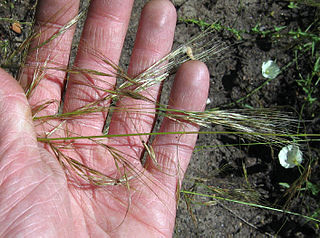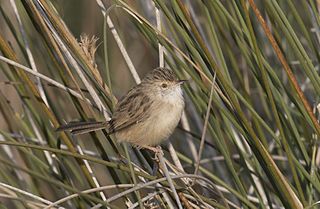
Domitia Lepida was a Roman aristocrat, related to the imperial family. She was mother of Valeria Messalina, wife of the Emperor Claudius. Lepida was a beautiful and influential figure. Like her sister, she was also very wealthy. She had holdings in Calabria and owned the praedia Lepidiana.
Junia Lepida was a Roman noblewoman who lived in the first century.
Aemilia Lepida is a Latin feminine given name that was given to the daughters of various Aemilius Lepiduses, men belonging to the Lepidus branch of the Aemilia gens (family) that was founded by the Marcus Aemilius Lepidus who served as consul in 285 BC. The Aemila Lepidas who appear in Roman historians were principally known for their engagements and marriages, with those in the late Republic and early Empire related to the Julio-Claudian dynasty.

The desert woodrat is a species of pack rat native to desert regions of western North America.

The rufous mouse opossum or little rufous mouse opossum is an opossum species from South America. The species has been found in Bolivia, French Guinea, Brazil, Colombia, Ecuador, Guyana, Peru and Suriname in lowland tropical rainforest at altitudes from 100 to 1000 m. It is presumed to feed on insects and fruit, like its close relatives.
Faustus Cornelius Sulla was a Roman senator who lived during the reign of the emperor Tiberius. He was suffect consul in AD 31 with Sextus Tedius Valerius Catullus as his colleague. Faustus was the son of Sulla Felix, a member of the Arval Brethren who died in AD 21, thus a direct descendant of the dictator Sulla. His mother was Sextia and his brother was Lucius Cornelius Sulla Felix.

Aemilia Lepida was a noble Roman woman and matron. She was the first great-grandchild of the Emperor Augustus.

The pearly parakeet, known as the pearly conure in aviculture, is a Vulnerable species in subfamily Arinae of the family Psittacidae, the African and New World parrots. It is endemic to Brazil.

The grey-capped warbler is a species of bird in the family Cisticolidae. It is monotypic in the genus Eminia. The grey-capped warbler is found in Burundi, Democratic Republic of the Congo, Kenya, Rwanda, South Sudan, Tanzania, and Uganda. It is a large, chunky, thin-tailed-warbler with a distinctive grey cap, a black band around its head, and a chestnut throat wrapping its neck. Grey-capped warblers maintain a diet of insects and other invertebrates, including caterpillars, moths, grasshoppers, and mantids.

Hemipilia lepida is a species of plant in the family Orchidaceae found on Kyushu Island in Japan, and in the Ryukyu Islands to the south.

Anaesthetis is a genus of longhorn beetles belonging to the subfamily Lamiinae.

Parasa lepida, the nettle caterpillar or blue-striped nettle grub, is a moth of the family Limacodidae that was described by Pieter Cramer in 1799. It is a native minor pest found in the Indo-Malayan region, including India, Sri Lanka, Vietnam, Malaysia and Indonesia. It is an introduced pest to urban trees in western Japan.

Anaesthetis testacea is a species of longhorn beetle. It is a common species in Europe that develops in the dead, terminal twigs of deciduous trees and shrubs.
Lepida, witty in Latin, may refer to:

Nassella lepida is a species of grass known by the common names foothill needlegrass, foothills nassella, foothill stipa, small-flowered stipa, small-flowered needlegrass, and smallflower tussockgrass.
Anaesthetis flavipilis is a species of beetle in the family Cerambycidae. It was described by Baeckmann in 1903. It is known from Kazakhstan, Russia, Siberia, and China.

Solidago lepida, the western Canada goldenrod or western goldenrod, is a North American plant species in the genus Solidago of the family Asteraceae. It is widespread across much of Canada, the western United States, and northern Mexico.
Zaeeropsis lepida is a species of beetle in the family Cerambycidae. It was first described by Ernst Friedrich Germar in 1848 as Anaesthetis lepida. It is known from Australia. The Australian Faunal Directory recognises Rhytophora lepida as the accepted name for this species.

Ellipsoptera lepida, the ghost tiger beetle, or the little white tiger beetle, is a species of flashy tiger beetle in the family Cicindelidae. It is found in Central America and North America. It is a state threatened species in Minnesota.

The delicate prinia is a small warbler. This prinia is a resident breeder in southern Asia, from Turkey to North India.












